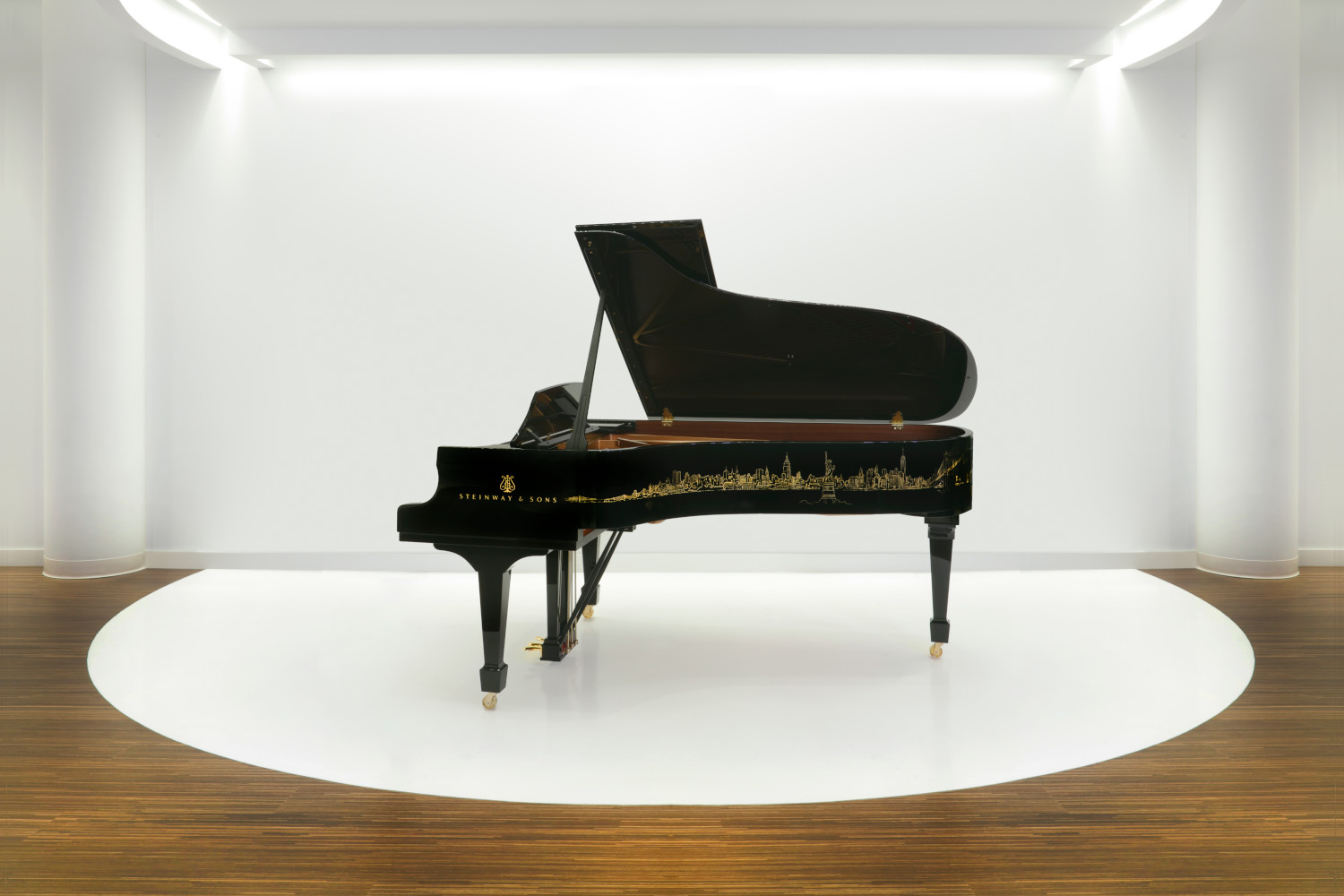
The term “art case” refers to a piano cabinet that has been visually enhanced. Historically, pianos were often owned by aristocrats and royalty, their appearance mirrored the opulence of a palace or echoed the trends of the day. They often featured exotic cuts of wood or intricate carvings. But as the piano has become more mainstream, so the cabinetry, more simplified. Today, when we think of a modern piano, we perhaps think of a shiny black grand on a concert stage with smooth lines. In fact, the vast majority of pianos manufactured in the world today are finished in high gloss ebony and it’s now become rare to see art case examples.

 But recently, an idea from Steinway caught my eye. It’s a type of art case that melds old with new ~ the deep, rich, black cabinet we’ve come to expect in a grand piano combined with eye-catching imagery on the rim of their grand pianos. It’s called the Skyline Collection. In essence, Steinway has created art case imagery with today’s modern pianos to create incredibly beautiful designs. This in no way detracts from the musical or mechanical workings of the piano but is simply an enhancement to the exterior of the piano body.
But recently, an idea from Steinway caught my eye. It’s a type of art case that melds old with new ~ the deep, rich, black cabinet we’ve come to expect in a grand piano combined with eye-catching imagery on the rim of their grand pianos. It’s called the Skyline Collection. In essence, Steinway has created art case imagery with today’s modern pianos to create incredibly beautiful designs. This in no way detracts from the musical or mechanical workings of the piano but is simply an enhancement to the exterior of the piano body.
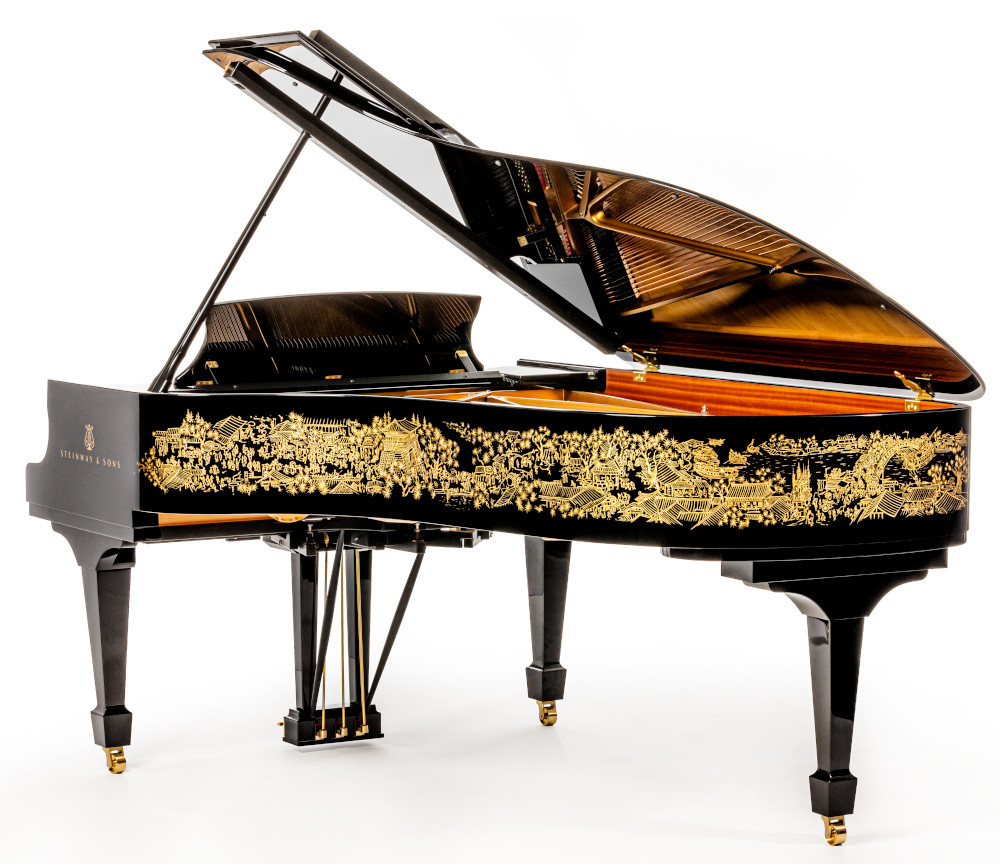
Speaking with Anthony Gilroy, VP Marketing & Communications at Steinway & Sons, these are not in any way mass-produced production pianos. Each piano has a one-of-a-kind custom theme of a city skyline. The panoramic expanse of the city lends itself perfectly for the narrow but long rim of the grand piano. According to Gilroy, “each of the Skyline pianos is not painted but rather, hand-gilded in 23 karat gold leaf. Each piano is an original”. I was curious to know if there was some kind of relief to the images but he said that they are smooth to the touch, just like any ebony polish piano. “The process is proprietary and the development was quite extensive”, noted Gilroy.
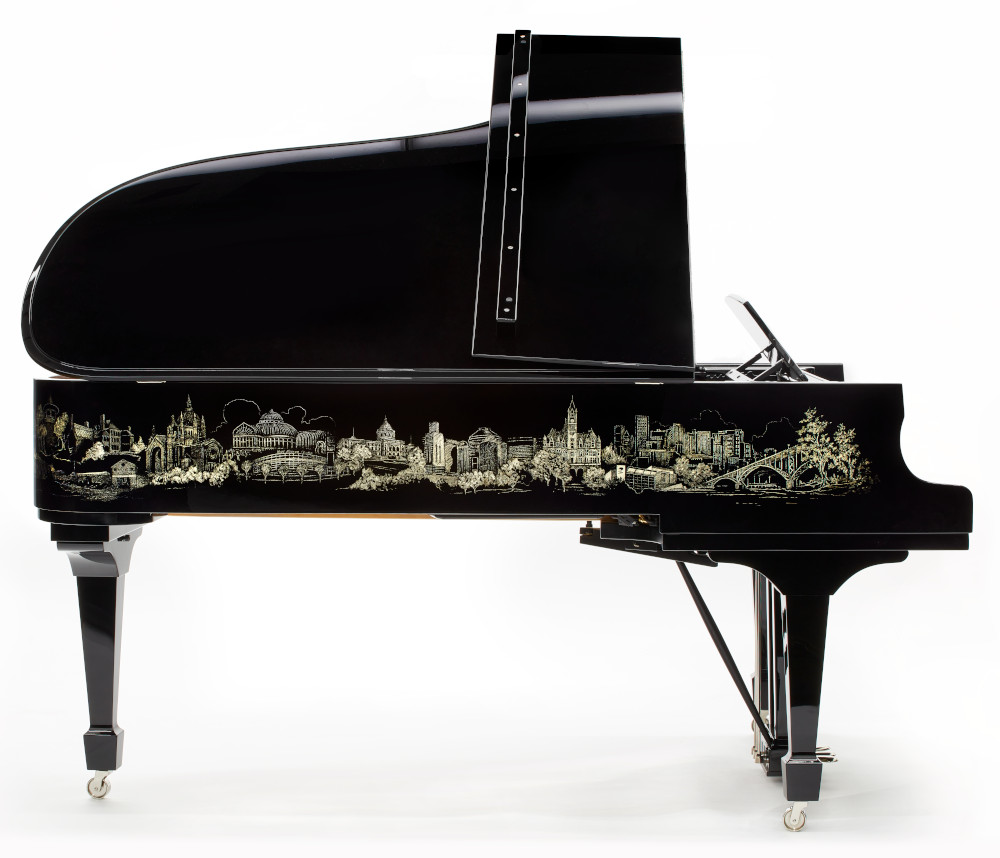
They were, however, kind enough to send an image of the hand-crafted work in progress of one of the pianos. So far, four have been done ~ the New York skyline, Twin Cities, Great Wall, and Qing Ming but the possibilities are endless. Any city skyline, or even any scene (like the Great Wall) can be applied to the rim of one of Steinway’s grand pianos. I like the fact that the scenes are an artistic rendition of the city or scene, featuring elements and symbols that are well recognized. The New York scene, for example, features Lady Liberty, the World Trade Center and the Empire State Building. For those who live in the area, you would probably be able to name many of the buildings along the Manhattan coastline. The Minneapolis “Twin Cities” piano features the ‘Big Spoon’ from the Sculpture Garden, the Weisman Art Museum, the Cathedral of St. Paul and the Stone Art Bridge. The Qingming piano is based on the famous scroll “Along the River During Qingming Festival” from the 12th century, painted by Zhang Zeduan. The original is a scroll that is 17 feet long (5.25 meters) and is perfect for the rim of a grand piano. The painting is considered to be the most famous of Chinese paintings and depicts rural, bucolic life from the Song Dynasty. Pictured are people from every walk of life celebrating the Qingming festival. Most famous is the bridge scene surrounded by boats in the water. The festival both commemorates ancestors and also celebrates springtime ~ new life, beauty and the change of the season. The word Qingming literally means “clear and bright”. Finally, the last Skyline piano shown displays the Great Wall of China. The scene starts at Shanhaiguan, where the wall meets the sea. While the mountainous range and trees are depicted in red, the Great Wall stands out in vivid contrast of 23 karat gold. You can follow the meandering portions of the Wall around the rim of the grand piano. Along the way, you can see many of the fortified areas. In the curve of the grand piano, you can also see a camel caravan.
These artistic interpretations on all of these pianos represent the recognizable parts of the city or scene. The detail is fantastic, the sights and symbols, undeniable. Appropriately named the “Skyline” collection because truly, the sky is the limit to what one could create as visual masterpieces superimposed onto beautiful musical instruments.
For more information, you can visit the
Steinway Website ~ Skyline Collection.
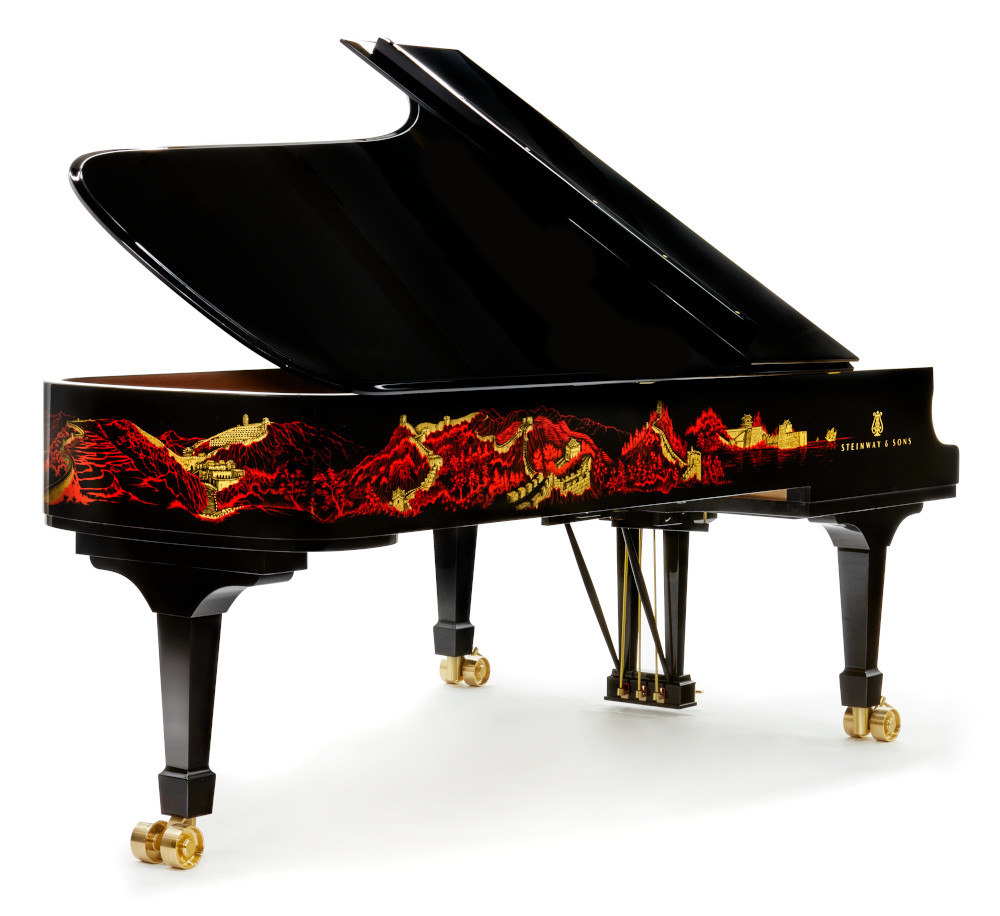
More Piano Articles
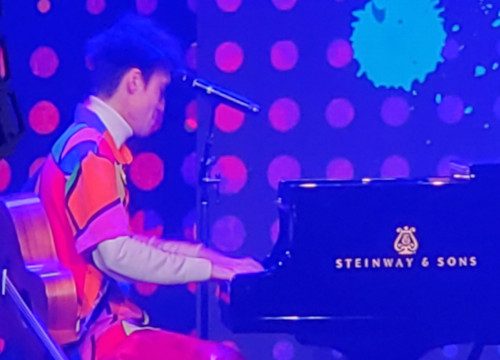
During the performance of Jacob Collier at the most recent NAMM show I was reminded that music makes us human, that beauty binds us together as a collective, and that the reason the music industry exists is to aid in the creation of art. I needed that reminder without which, the annual trade show featuring many of the great piano makers is just the sale of wares. I believe that people are feeling the uncertainty ...
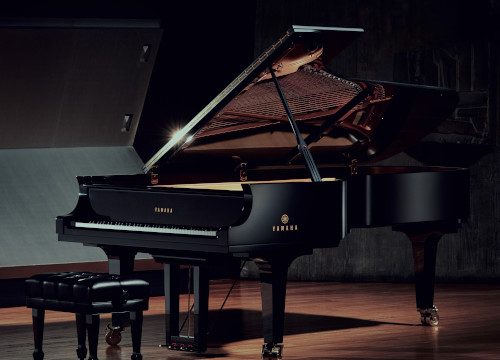
I used to have a teacher who would frequently say, “For every single grade point PAST 80%, it takes as much effort as the FIRST 80.” I believe this statement to be true from experience. The first 80 is the easiest. Chipping away at every point past that is the challenge. The bulk of the work can bring a project into shape but it’s the pursuit of excellence, that’s where the challenge lies. Yamaha is ...

The value of a piano is obvious ~ it’s the music that you make with it. But often, families are going through life changes which involve a house move and unfortunately, the piano needs to be sold. They invariably ask the question, “What are we going to do about the piano?” This question comes up because, as you can imagine, they’re not easy to move. We don’t simply pack them away in a cardboard box ...

You’ve been playing your piano for years now and the time has come to seriously consider downsizing the house and move into a condo. But what do you do with the piano? You love your piano and can’t imagine life without it and besides, you absolutely hate the idea of playing a digital keyboard. Many people don’t know that you can add digital functionality without compromising your existing piano. Yes, it is completely possible to ...
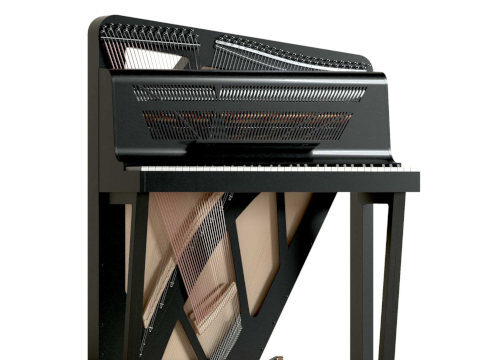
Many years ago, I remember seeing a piano in a museum similar to the one shown above (built in 1787 by Christian Gottlob Hubert. On display at Germanisches Nationalmuseum - Nuremberg, Germany). I have often wondered why acoustic portable pianos never really took off. Although we've seen more portable keyboard instruments like harpsichords, accordions or electronic keyboards, they operate completely different from a traditional piano in that they either pluck the strings, use air with ...
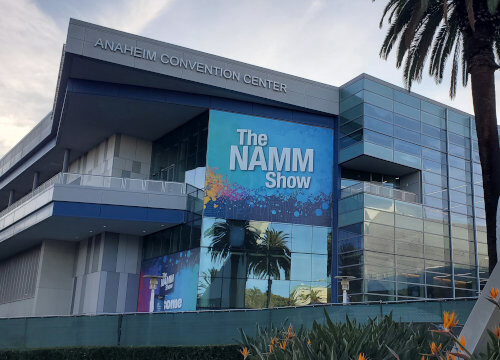
This was the first year since covid that the National Association of Music Merchants (NAMM) trade show was back to its regular January date and, in fact the first show where it felt back to normal. How was it? To answer that, I'm going quickly review the piano market over the last few years. Piano sales boomed during covid. Think about it - everyone was at home and with time on their hands, many turned ...